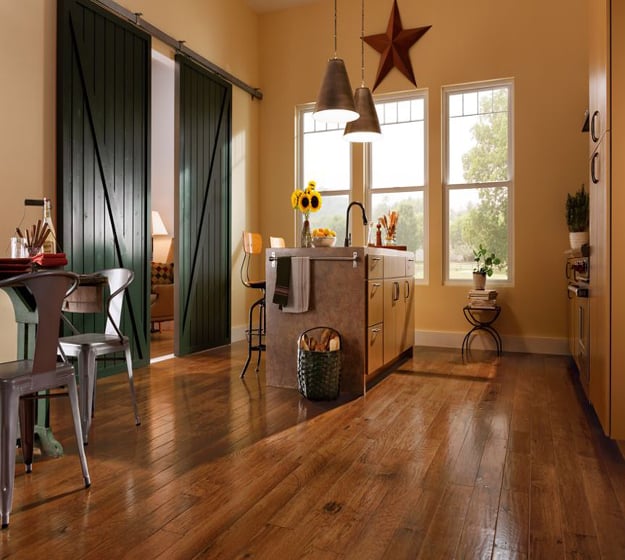Not too long ago, all wood flooring was installed unfinished, and finished on site. A major advantage of a site-finished floor is that the finished floor will have a uniform finish with square edges, meaning no beveling or gaps between boards. The actual installation requires nailing unfinished planks to a plywood subfloor, sanding the surface down, then staining the wood, and finally finishing it with the correct number of coats of finish, depending on the application. A product which is pre-finished at the factory, however, allows a faster, cleaner, and often less expensive installation.
Today, prefinished or factory finished floors are of much higher quality than in years past. The same uniform appearance of a site-finished floor is now achievable with pre-finished planks. The introduction of new technologies and competition has reduced prices and spawned a huge selection of finish choices. Whether solid or engineered, prefinished floors provide a multitude of options for the prospective buyer. The differences range from different surfaces and textures, to different gloss levels and different colors. Also, the factory centered sand/finish process allows for a variety of bevel edge detailing on the boards.
The different types of finishing materials and textures provide for tremendous options. Planks can have a smooth finish, or a time-worn distressed, or “handscraped”, finish. The difference is the texture of the wood. These are purely aesthetic differences, and have no real effect on the structural capacity of the wood.
The types of actual finish products used to seal and finish the wood also vary. The most common are polyurethane finishes. Whether oil based or water based, polyurethane will harden into a thick layer on top of the wood and leave a smooth surface, which will protect the wood from scratches and moisture. A variation of this would be an aluminum oxide finish which adds particles to the polyurethane to make the surface more resistant to scratches and abrasion.

